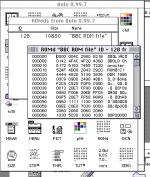LaPorta
Well-known member
Hello everyone,
There's something that has been frustrating both myself and others who have tried to play Bolo over the internet of late: it simply does not work. There appears to be something that the internet either does now or does not support that it did previously that breaks its ability to play games over the UDP/IP protocol. This limits Bolo to local AppleTalk networks, or rigged "AppleTalk over Internet" solutions, none of which I know how to make work. My challenge is this: if you have some sort of way to work around this already (AppleTalk tunneling over the internet that is easy to do) or something, please let me know. If this is really as difficult as I am lead to believe, necessitating some sort of add-on, reprogramming, or separate background application on the host computer, I'll front $50 to the person who pulls it off. If anyone else would really like to see this happen, feel free to say "Hey, I'll add $5 to that!" or whatever you want. Only catch: this needs to work on a real OS 7/8/9 computer, and not within SheepShaver, Basilisk or some such.
Anyone can help with this?
There's something that has been frustrating both myself and others who have tried to play Bolo over the internet of late: it simply does not work. There appears to be something that the internet either does now or does not support that it did previously that breaks its ability to play games over the UDP/IP protocol. This limits Bolo to local AppleTalk networks, or rigged "AppleTalk over Internet" solutions, none of which I know how to make work. My challenge is this: if you have some sort of way to work around this already (AppleTalk tunneling over the internet that is easy to do) or something, please let me know. If this is really as difficult as I am lead to believe, necessitating some sort of add-on, reprogramming, or separate background application on the host computer, I'll front $50 to the person who pulls it off. If anyone else would really like to see this happen, feel free to say "Hey, I'll add $5 to that!" or whatever you want. Only catch: this needs to work on a real OS 7/8/9 computer, and not within SheepShaver, Basilisk or some such.
Anyone can help with this?

